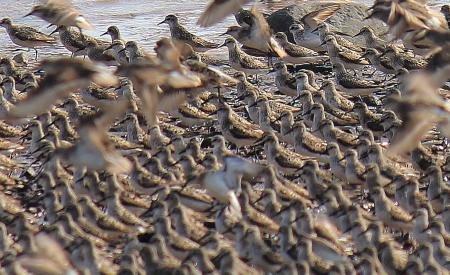Mount Allison mathematics professor part of National COVID-19 Modelling Task Force
Dr. Matthew Betti is working with Dr. Jane Heffernan of York University on frameworks to determine PPE needs for different COVID-19 scenarios, measure the impact of social distancing
SACKVILLE, NB – Dr. Matthew Betti, Assistant Professor in Mathematics and Computer Science at Mount Allison University, is part of a national team helping to build model frameworks for potential COVID-19 scenarios in Canada. The group’s work is looking at several areas, including national use and supply of personal protection equipment (PPE), measuring the effects of social distancing, and the potential long-term scenarios around these restrictions.
 Betti is a member of the National COVID-19 Modelling Task Force. Working with York University’s Dr. Jane Heffernan, the Public Health Agency of Canada, Health Canada, and Statistics Canada, he has developed model frameworks — a complex set of mathematical equations — to assess different trends and potential scenarios for COVID-19 impacts across Canada.
Betti is a member of the National COVID-19 Modelling Task Force. Working with York University’s Dr. Jane Heffernan, the Public Health Agency of Canada, Health Canada, and Statistics Canada, he has developed model frameworks — a complex set of mathematical equations — to assess different trends and potential scenarios for COVID-19 impacts across Canada.
“With these frameworks, we can look at hundreds of different potential scenarios across the country, nationally and by province or territory,” says Betti. “Our work is primarily looking at building and implementing models, which can estimate month-by-month PPE usage and N95 mask usage to inform government procurement and logistics for different scenarios around closures and social distancing.”
Betti and Heffernan have been devising potential scenarios for PPE demands and usage, focussing on data from different groups and areas of society.
“We are currently working to incorporate long-term care facilities into our modelling to get a better idea of what’s needed in specific areas,” explains Betti. “Areas like social work and at-risk populations, we are trying to build models to help determine their PPE needs so they can be adequately addressed.”
The team has also done some small calculations and models that are able to quantify and illustrate the effects of social distancing on virus transmission as well as modeling scenarios on the relaxation of restrictions for the coming months and how that may impact efforts to flatten the curve.
“The data we’re reviewing could help show more the bigger picture and thus help with planning and responses to COVID-19 in Canada,” says Betti. “We know the total number of cases being reported, that doesn’t mean that everything is being captured, especially with the variety of symptoms and severity that can appear with COVID-19. Planning for different scenarios can help prepare for the current situation but also potential second and third waves of the illness.”
The model framework Betti and his colleagues are using was first developed by colleagues in Australia but is being adapted to the Canadian COVID-19 context, considering features like geography and social demographics. The Canadian team speaks daily to update scenario notes and provide data to government and healthcare officials.
“As healthcare and government officials have been saying, this is a bit of a balancing act. Some spread of the disease is going to happen,” says Betti. “We hope our research can help provide insight looking at the bigger picture and areas that might not be as obvious.”
Betti has taught at Mount Allison for nearly three years. He holds a PhD from Western University in Applied Mathematics. His research focuses on ecological and evolutionary modelling of biological systems, including, in-host modelling — looking at how viruses interact inside human bodies. He is also currently working on a study using agent-based models to try to make predictions about how pesticides, disease, and climate change will affect honey bees and how conservation efforts will help, research funded by the Natural Sciences and Engineering Research Council of Canada (NSERC).
Watch Dr. Betti and Dr. Jane Hefferman (York University)'s remote interviews about their work with the National COVID-19 Modelling Task Force on CTV Atlantic's Live at Five (April 27, 2020)




